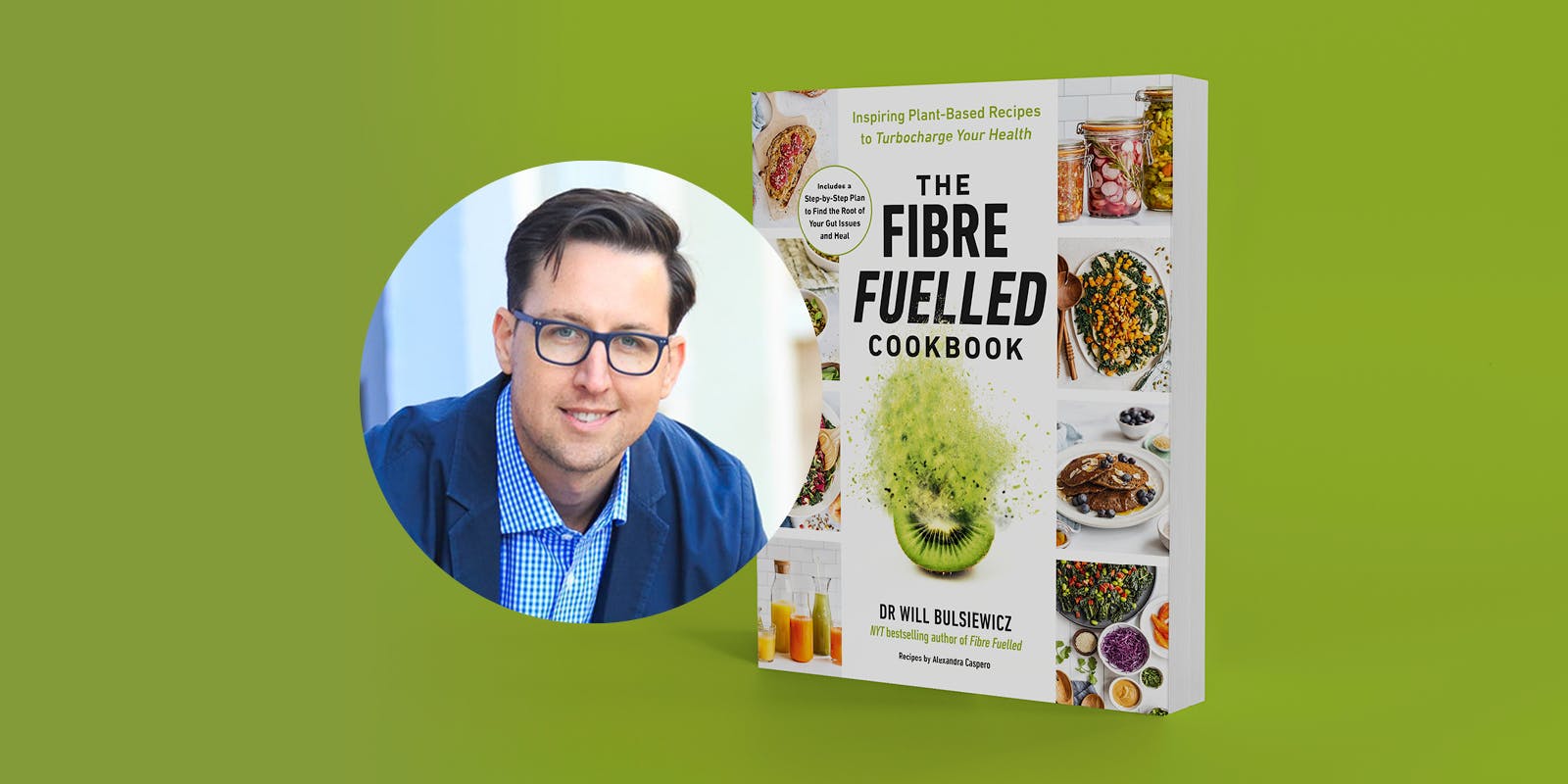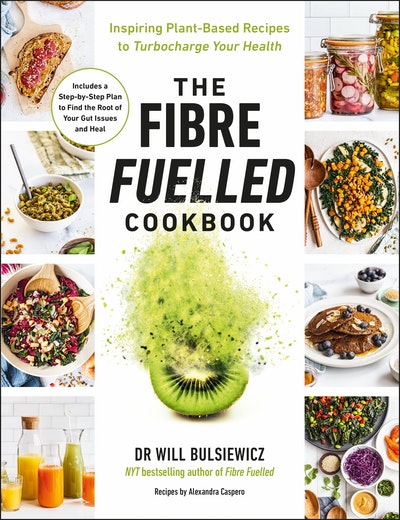What are the symptoms of a histamine intolerance? What even is a histamine intolerance? And how do you get rid of one? Dr Will Bulsiewicz breaks it down in The Fibre Fuelled Cookbook.
Ever heard of histamine intolerance? Odds are, probably not.
Despite being relatively unknown, however, histamine intolerance is a common problem that people face – and, unfortunately, it’s not an easy one to diagnose. With his new book, The Fibre Fuelled Cookbook, Will Bulsiewicz, MD (Dr B) hopes to shed some light on the topic. His hope is that by sharing some facts about this intolerance and how to treat it, he can provide people with a solution to this hard-to-pin-down health problem.
What is histamine intolerance?
‘Histamine is a normal and important part of human physiology,’ Dr B explains. It ‘is a signalling molecule with broad and far-reaching effects.’ Therefore, the problem that people face when confronted with histamine intolerance isn’t necessarily attributed to histamine itself, but rather to an imbalance of histamine in the body.
If that sounds complicated, it’s because it is. Histamine contributes to a slew of bodily functions from smooth muscle contraction, to increasing oestrogen production in women and playing a role in penile erection in men. Therefore, the signs of histamine intolerance can be equally far-reaching, making this intolerance difficult to identify.
Similarly, no one test can show patients whether they have histamine intolerance, given the nature of histamine. ‘The threshold for histamine intolerance is a moving target.’ Says Dr B. ‘This balance and whether it elicits symptoms (and which ones) is specific to you, and it will vary from day to day and from meal to meal.’
However, that doesn’t mean it’s cause for despair, but rather a call to action to dig deeper, keep an eye out for symptoms, and implement a strategy to decipher what your body is telling you.
What are the symptoms of a histamine intolerance?
‘In a recent review of patients with confirmed histamine intolerance, they found the number one symptom was bloating,’ Dr B shares. ‘Almost everyone had bloating. After that, the symptoms scatter in literally thousands of directions.’
A few of the most common symptoms include:
- Respiratory: runny nose, sneezing
- Cardiovascular: rapid heart rate, light-headedness, low/high blood pressure
- GI tract: bloating, abdominal pain, heartburn
- Skin itching: flushing, hives, eczema
- Other symptoms: insomnia, headache, fatigue
How do I get rid of a histamine intolerance?
If these symptoms are starting to sound familiar, you might be questioning whether you have a histamine intolerance and more importantly, how to get rid of this intolerance if you do have it.
Because every food contains histamine, it’s not possible to avoid it altogether. Rather, dealing with your histamine intolerance is about learning which foods interrupt your body’s natural balance. The goal is not to avoid all histamine, ‘because that’s impossible,’ says Dr B, ‘but to get you to a place where your symptoms improve.’ From there, you can work backwards to figure out which histamines you’re sensitive to.
To keep it as simple as possible, Dr B recommends implementing the GROW strategy:
- Genesis: Make sure that the cause of your symptoms isn’t something else. Rule out things like food allergies, Chron's disease, and conditions such as mast cell activation syndrome first.
- Restrict: Enter a temporary restrictive phase to figure out which histamines you’re sensitive to and what your threshold is.
- Observe and Work it back in: Systematically reintroduce foods, keeping notes on what and when you eat. Understanding your body’s reaction will help you to establish a threshold.
- See Dr B’s suggested order of reintroduction on p 137 of the book
What foods to avoid if you are histamine intolerant
Figuring out which foods cause your histamine intolerance might require a period of restriction, but Dr B emphasises that this phase is temporary. You don’t want to cut out all of these foods forever, rather use your findings from a period of restriction and reintroduction to determine what you’re uniquely sensitive to.
Common foods that cause histamine intolerance include:
- Alcohol
- Canned legumes
- Citrus foods
- Caffeinated coffee and energy drinks
- Fermented plant foods (sauerkraut, tempeh, miso, etc.)
- Nuts and nut milks
- Cheese
- Eggs
- Processed meats
- Veggies including spinach, aubergine, tomato and avocado
- Fruits including citrus, papaya, pineapple and strawberries
Check out these Quinoa, Corn and Black Bean-Stuffed Peppers and more low-histamine recipes in The Fibre Fuelled Cookbook.














